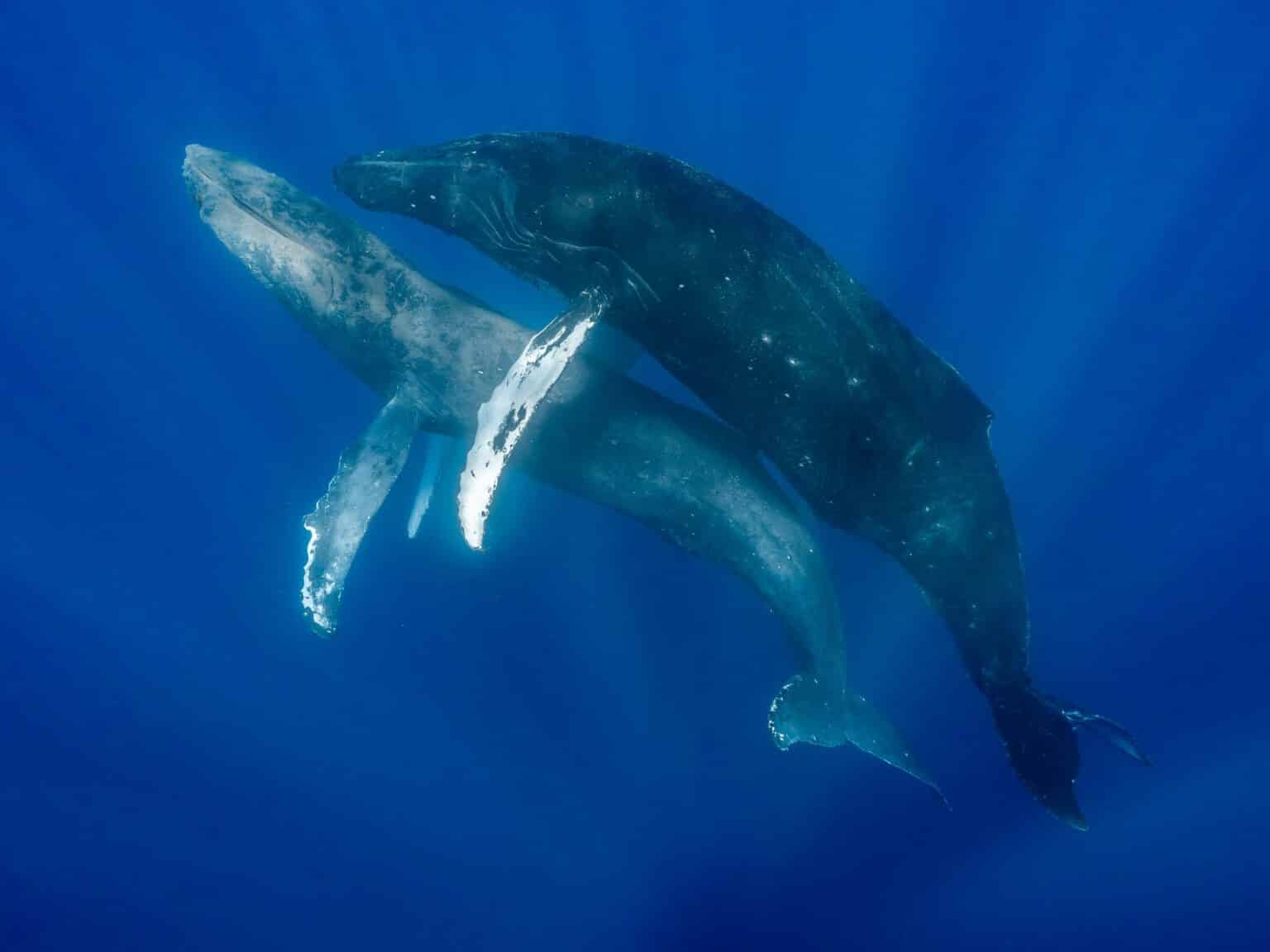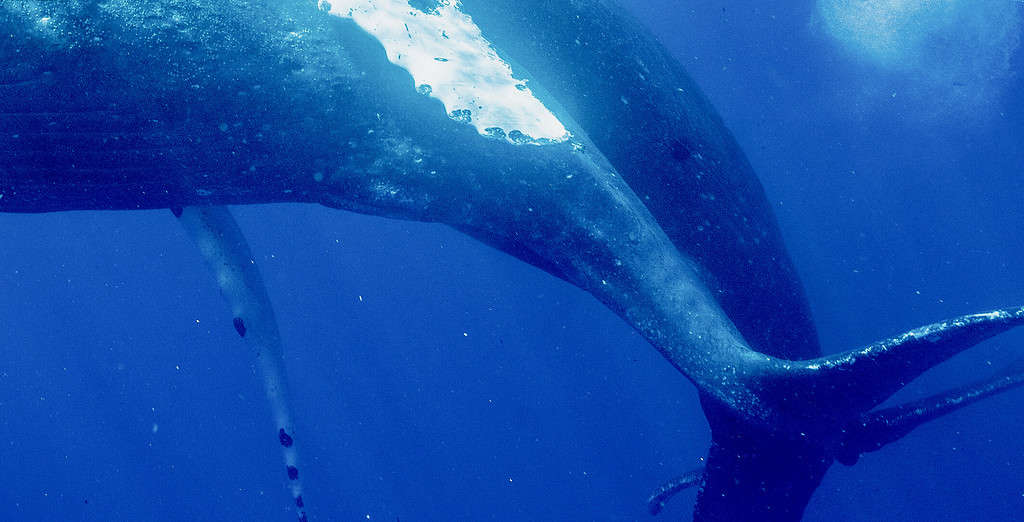
A pair of marine photographers were diving off the coast of Maui when they came face to face with a bewildering sight. They quickly directed their cameras at two huge entangled humpback whales, one of which was thrusting away.
This was the first time anyone had ever recorded humpback whales doing the deed. As if this encounter wasn’t remarkable enough, the story took an unexpected twist when, upon closer inspection, researchers found that both copulating whales were male.
A rare glimpse into the intimate lives of humpbacks
Shortly after witnessing the historic sight, the photographers reached out to Stephanie Stack, a whale researcher at the Pacific Whale Foundation. Stack was amazed by the footage, which provides an unparalleled window into the private lives of humpback whales.
Humpback whales typically become sexually mature between four and ten years of age. On average, female humpbacks give birth to one calf every two to three years, though there are cases where they may give birth annually. These calves are born following an 11-month pregnancy period, with their lengths ranging from 13 to 16 feet at birth.
They usually remain close to their mothers for the first year of their lives, during which the mothers exhibit protective behaviors such as swimming nearby and frequently touching them with their flippers. While it is not common for calves to maintain long-lasting relationships with their mothers, they tend to inhabit the same feeding and breeding grounds as them.
Humpback whales follow a polygynous mating system. Multiple males aggressively compete for the opportunity to mate with females during the breeding season. This season occurs in the winter, during which the whales can be found in tropical waters.
Beyond these facts, not much is known about humpback whale reproduction. This is a gap of knowledge that is particularly important to address since humpback whales were close to being wiped out. Before a final moratorium on commercial whaling in 1985, all populations of humpback whales suffered dramatic declines of up to 95 percent.
Still, when the researchers analyzed the footage of the two copulating whales, they immediately noticed many things awry.
A curious case

The observation took place from a stationary private boat approximately two kilometers west of Molokini crater, where passengers witnessed two humpback whales nearing their location. One of the whales appeared notably undernourished and was infested with whale lice, indicating it was in poor health.
In a surprising turn of events, the second whale began to closely interact with the first. Using its pectoral fins to hold the ailing whale in place, it performed shallow, brief penetrating movements. The pair circled the boat multiple times, providing photographers Krannichfeld and Romano with a unique opportunity to capture the moment by extending their cameras over the side of the boat.
It is important to note that approaching or swimming with humpback whales within 100 yards is illegal in Hawaii. The boat remained stationary, allowing the whales to approach on their own.
The contrasting health conditions of the two whales added an intriguing aspect to this rare occurrence. It may suggest that the compromised state of the injured whale, potentially due to a collision with a ship, influenced their behavior. Perhaps the healthy male engaged in copulation to assert dominance or simply took advantage of the other ailing male. In any event, the penetrated male did not seem to welcome or willingly engage in the copulation.
Remarkable, intriguing but not so strange
“The documented instance of male–male nonreproductive behavior presented here, including the unique case of an apparently injured and ailing whale being penetrated by a seemingly healthy counterpart, raise intriguing questions about the nature of such behavior in humpback whales,” researchers wrote in their study.

It’s rather remarkable that the first and only footage of humpback whale copulation involved gay intercourse. However, that would not necessarily be surprising. Homosexuality is much more common in the animal kingdom than most people think. By several estimates, researchers have observed such activity in more than 1,500 species.
This includes the closely related dolphins, which belong to the same order Cetacea as humpbacks. In bottlenose dolphins, both females and males engage in homosexual behaviors, including acts where one dolphin uses its snout to stimulate another. This kind of activity is as common as heterosexual interactions among them.
The new findings appeared in the journal Marine Mammal Science.






